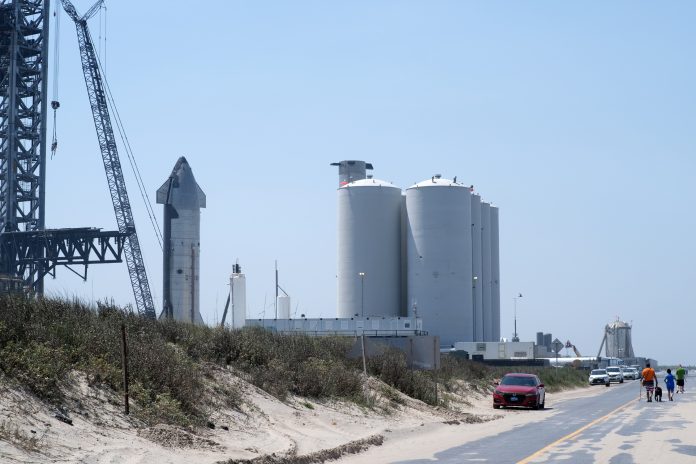
With SpaceX’s incident-free, static-fire test of 11 of a Super Heavy booster’s 33 rocket engines at Boca Chica/Starbase on Nov. 29, the company moved a step closer toward attempting the first orbital launch of Starship.
The engines were lit on Super Heavy BN7 early on Tuesday afternoon for roughly 13 seconds, longer than the static-fire test of 14 of the booster’s engines on Nov. 14 and the longest duration for a Super Heavy prototype static-fire test to date.
SpaceX’s billionaire founder and CEO Elon Musk tweeted on Nov. 15 that the next test would involve 20 seconds, give or take, of some number of engines “firing with max oxygen fill to test autogenous pressurization, possibly one more static fire, then orbital launch attempt.” The Nov. 29 test may have been the autogenous pressurization test.
The term refers to process of converting small amount of onboard liquid propellant to gas and using it to pressurize the booster’s fuel tanks in order to keep fuel flowing to the engines. The Raptor 2 engines that power the first-stage Super Heavy — the world’s most powerful rocket — and the second-stage Starship run on a mixture of liquid oxygen and liquid methane. SpaceX successfully fired Starship’s six engines simultaneously on Sept. 8.
Musk’s estimate that first orbital flight could take place in November didn’t pan out, though a senior NASA official said on Oct. 31 that an early December launch may be more likely and that three more major Starship test flights would follow. Delays have been an integral part of the Starship development program all along, however, so there’s no guarantee the first orbital flight will take place this month.
NASA in 2021 awarded SpaceX $2.9 billion contract to develop the Human Landing System to return U.S. astronauts to the moon for the first time in a half century as part of the agency’s Artemis program. SpaceX is developing Starship for that purpose, and to carry humans and cargo to Mars and to Earth destinations. If things go according to plan, the first crewed Starship mission to the moon, Artemis 3, will take place in 2025 or 2026.
Meanwhile, SpaceX is still waiting to find out if the Federal Aviation Administration will grant the necessary launch license for the first orbital flight.
An environmental assessment by the FAA of the potential impact of orbital flight testing at Boca Chica concluded with a Finding of No Significant Impact (FONSI), issued Sept. 26, representing a major step toward the first orbital launch from Boca Chica.
However, the FAA also required SpaceX to undertake more than 75 separate actions to mitigate the potential impact of orbital launches there and said the environmental assessment was just one step in the application for an initial launch license.
“SpaceX also must meet FAA safety, risk and financial responsibility requirements before a license is issued for any launch activities,” said the agency. “The FAA will make a license determination only after SpaceX provides all outstanding information and the agency can fully analyze it.”




